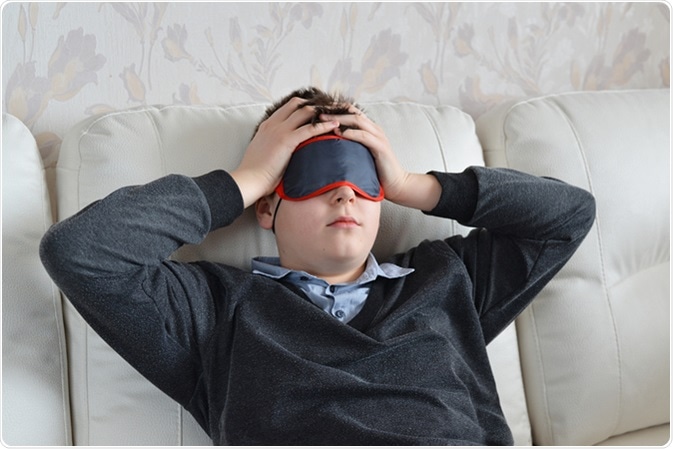Photophobia, otherwise known as light sensitivity, is a symptom in which the eyes become sensitive and intolerant to light. Incandescent light and fluorescent light are the major sources for photophobia. These lights, starting from streetlights, interior lights, and the bright rays of sunlight cause severe irritation or pain in the eye. These types of sensations are collectively known as photophobia and it requires medication.
If one has signs of itching, wincing, burning, and squinting when exposed to sunlight, then there are plenty of chances that one might have photophobia. Another major sign is the production of excessive tears in the eyes. Photophobia can be neither a temporary nor a permanent side effect. It is purely dependent on the particular health condition due to which it is caused.

What are the Causes?
The frequent and common diseases that are accompanied by light sensitivity or that serve as the root cause include migraine, anterior segment disease, intracranial conditions, dry eyes, and blepharospasm.
- Migraine: Migraine is an intense headache that triggers the sensitivity to light. Chronic and sporadic migraines are two types of migraine, which have huge possibilities of creating light sensitivity. People who suffer from chronic migraine experience more light-sensitivity than people with sporadic migraines. It is proved that almost 80 percent of people with migraines have photophobia.
- Anterior segment disease: Conditions such as cyclitis, iritis, and blepharitis have a long-term association with photophobia. All these disorders are apparently due to direct irritation of the trigeminal afferents that innervate both the cornea and the eye.
- Dry eyes: The condition in which tears fail to provide adequate moisture is called as dry eyes. This is caused by the rapid decrease of moisture and lubrication on the surface of the eye. This paves way for photophobia. If dry eyes are left untreated, it can result in ulcer and scars on the cornea, and can even reach the extent of vision loss.
- Blepharospasm: Blepharospasm, also known as eye dystonia, isan unbearable pain of muscle contraction around the eye. It often occurs due to the improper delivery of messages from the brain to the muscles that surround the eye. Blepharospasm is said to be a neurological movement disorder, which requires compulsory medication. The symptoms of this disorder are frequent blinking and irritation in the eye. A study says that four out of five blepharospasm patients suffer from photophobia.
- Intracranial Conditions: This condition involves meningeal irritation from meningitis, pituitary tumors, etc., which might cause photophobia. Meningitis is an inflammation of the meninges, caused by bacterial infection or virus.
How is it Caused?
Even though the exact spot in the brain that is responsible for photophobia is unknown, recent researches have helped in illuminating the causes of this symptom. The light that enters the retina is carried through the visual path to reach the brain. The cells in the retina, called cones, detect light and create vision (like reading and seeing).
A second system known as the melanopsin system specifically senses the light without playing any role in visual creation.
There are very few amounts of melanopsin cells in the retina. These cells do not turn off, once they are on. It is believed that both these cells (cones and melanopsin) set up a sense of brightness, which may cause the trouble.
It has been identified that the intrinsically photosensitive retinal ganglion cells (ipRGCs) contain the photopigment melanopsin. ipRGCs detect light and transform the photosignal into suprachiasmatic and olivary pretectal nucleus.
The suprachiasmatic nucleus helps in the sleep and wake cycle and the olivary pretectal nucleus helps by providing information for entertainment of the circadian rhythms and simulates the pupillary light reflex.
These cells are found in both the retina and iris, thus making the eye photosensitive. In deep brain centers, these cells connect with the trigeminal system and cause pain to the eye.
Factors that Increase Vulnerability
Anyone with a sensitive eye can be easily affected with photophobia. The eye color of a person has great influence in causing this sensitivity. People with light-colored eyes are at greater risk of being affected, as they may have a lower pigment quantity that leads to inefficient scattering of the light beams. This inability makes the eye more sensitive to light and causes intense pain.
Once affected by photophobia, the particular person has a chance of getting albinism (low pigment level), conjunctivitis, iritis, and total color deficiency (visuals are seen only in gray shades). In some cases, it is natural for people to be born with light sensitivity. People who are blind can also experience some kind of photophobia.
Photophobia is not to be considered as a disease but a sign of conditions like infection or inflammation that can irritate the eyes. Treating the underlying causes is the best solution to get rid of photophobia. Once affected by light sensitivity, it is advisable to consult an eye care professional (optometrist or ophthalmologist) and make a grass-root eye examination.
Sources
- americanmigrainefoundation.org/…/
- www.milpitasoptometric.com/…/
- www.aao.org/…/photophobia-looking-causes-solutions
- http://www.allaboutvision.com/conditions/lightsensitive.htm
- http://www.improveeyesighthq.com/light-sensitivity.html
- https://www.ncbi.nlm.nih.gov/pmc/articles/PMC3485070/
Further Reading
- All Photophobia Content
Last Updated: Aug 23, 2018

Written by
Susha Cheriyedath
Susha has a Bachelor of Science (B.Sc.) degree in Chemistry and Master of Science (M.Sc) degree in Biochemistry from the University of Calicut, India. She always had a keen interest in medical and health science. As part of her masters degree, she specialized in Biochemistry, with an emphasis on Microbiology, Physiology, Biotechnology, and Nutrition. In her spare time, she loves to cook up a storm in the kitchen with her super-messy baking experiments.
Source: Read Full Article
